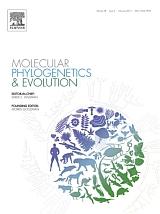




Related bibliographies:
Reptiles
 Snakes Snakes
 Tropidophiidae Tropidophiidae
Central America
South America






































































































































































































































































































































| |

Bibliography of the genus
Trachyboa (Rough-scaled Dwarf Boas)

(Reptilia: Serpentes: Tropidophiidae)
Note:
In order to limit redundancy, relevant literature indexed in the related bibliographies in the left column may not have been included in this page. For a comprehensive search of literature, these bibliographies should therefore also be consulted.
Trachyboa in general
 |
Amaral, A. do 1927. Studies of Neotropic Ophidia. 8. Trachyboa Peters 1860. Bull. Antevenin Instit. Amer. Glenolden 1(3): 86, 87.
Arnett, J.R.; Goodwin, M.; Teagarden, H.R. 1992. Trachyboa Peters in captivity: an overview. pp. 91-94. In: Strimple, P.D. & Strimple, J.L. (eds.). Contributions in herpetology. Greater Cincinnati Herpetological Society, Cincinnati. 111 pp.
Barbour, T. 1937. Ovoviviparity in Trachyboa. Copeia 1937: 139.
Brongersma, L.D. 1951. Some notes upon the anatomy of Tropidophis and Trachyboa (Serpentes). Zoologische Mededelingen (Leiden) 31: 107-124.
Wilcox, T.P.; Zwickl, D.J.; Heath, T.A.; Hillis, D.M. 2002. Phylogenetic relationships of the dwarf boas and a comparison of Bayesian and bootstrap measures of phylogenetic support. Molecular Phylogenetics and Evolution 25(2): 361-371.
|
Trachyboa boulengeri
 |
Bellairs, A.A. 1950. The limbs of snakes, with special reference to the hind limb rudiments of Trachyboa boulengeri. British Journal of Herpetology 1: 73-83.
Cisneros-Heredia, D.F. 2004. Geographic distribution: Trachyboa boulengeri (Northern Eyelash Boa). Herpetological Review 35(4): 413.
Dwyer, Q.; Arteaga, A.; Barrio-Amorós, C.L.; Flagle, A. 2018. Natural history notes: Trachyboa boulengeri. Diet. Herpetological Review 49(2): 359-360.
Lehmann, H.D. 1970. Beobachtungen bei der Haltung und Aufzucht von Trachyboa boulengeri (Reptilia, Boidae). Salamandra 6(1-2): 32-42.
Lehmann, H.D. 1974. Trachyboa boulengeri (Serpentes, Boidae) frisst Fische. Salamandra 10(3-4): 132-133.
Neill, W.T. 1960. The caudal lure of various juvenile snakes. Quarterly Journal of the Florida Academy of Sciences 23: 173-200.
|
| | 














































































































































































|

